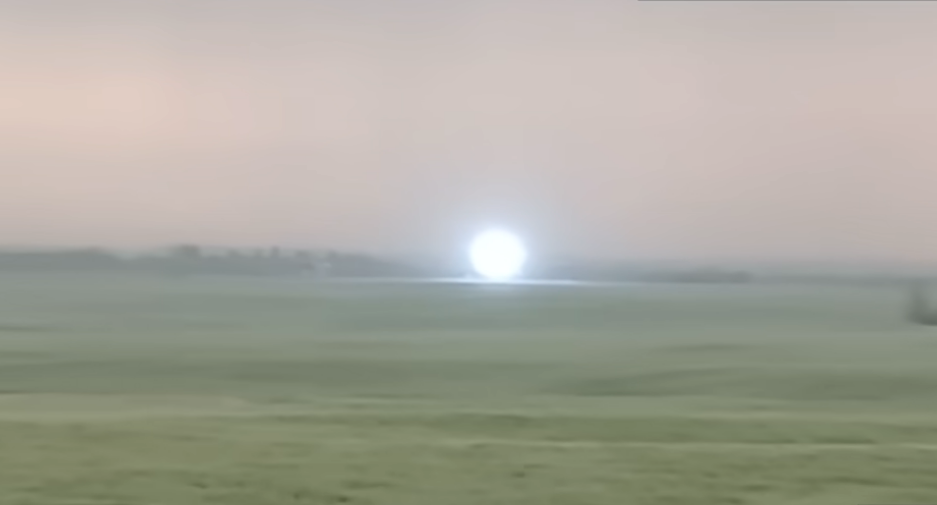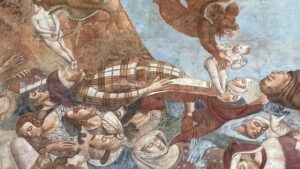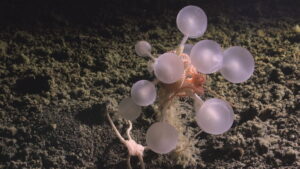As a massive storm swept through central Alberta in early July, a couple stood on their porch watching bolts of lightning play across the cloudy skies. A particularly massive lightning strike hit nearby. A moment later, they saw a ball of light hovering near the impact site.
In an interview with Global News Canada, Ed Pardy described seeing “a ball of fire… about 20 feet above the ground, and it kind of stayed there in a big round ball.”
Ed and his wife, Melinda, said the orb consisted of bluish light, maybe two meters across. Amazed, they began filming. The couple captured 23 seconds of the light hovering on the horizon, before it vanished with a popping sound.
After viewing the video, that the couple sent to several Canadian news networks, many people believe the phenomenon is “ball lightning.”
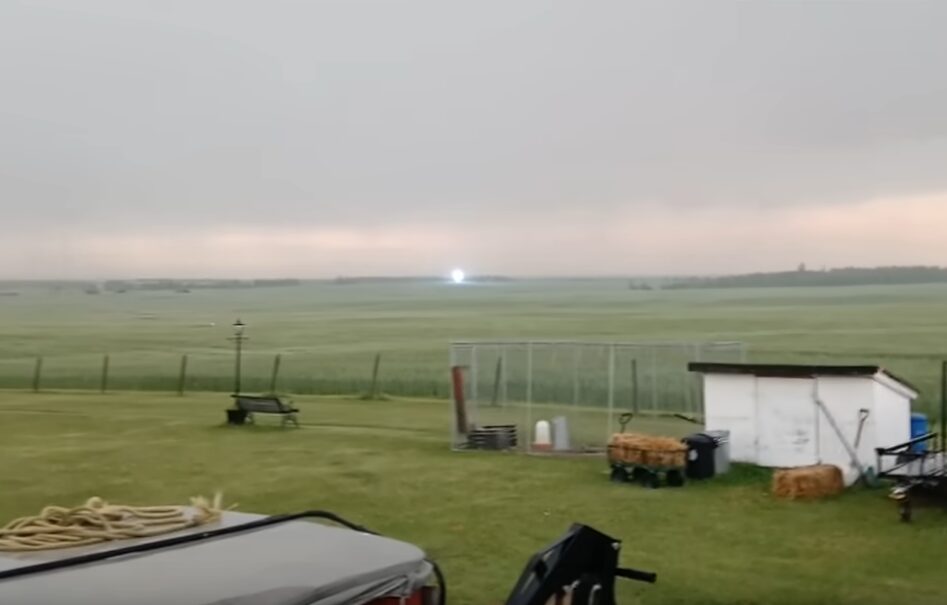
The view of the glowing orb from Ed and Melinda Pardy’s porch. Photo: Youtube
Elusive and mysterious
Ball lightning is a rare and little-understood atmospheric phenomenon. Accounts vary, but the generally agreed-upon description is of a ball of light, anywhere from a few centimeters to a few meters across. Ball lightning coincides with thunderstorms and hovers for a minute or so before disappearing.
Accounts of ball lightning are uncommon, but stories have been around for centuries. The earliest account commonly cited is from a massive storm that swept over England in 1638. Three hundred people were attending church when, according to eyewitness accounts, a ball of fire over two meters across burst through the church window, bashed around, tore open the roof, and killed four church-goers, filling the building with smoke and the smell of sulfur. Witnesses concluded it was the devil, an understandable conclusion at the time.
This isn’t the only story of “globular lightning” entering a building. In 1852, the French Academy of Sciences took sworn statements that a ball of light, roughly the size of a human head, burst from the fireplace of a startled tailor, having traveled down the chimney.
In 1753, ball lightning killed a Russian scientist researching electricity, according to contemporary reports. Georg Richmann was holding one end of a string, the other end of which he had attached to a kite. Ball lightning appeared, traveled down the string, and killed Richmann instantly.
Despite scattered reports continuing over the years, scientific understanding lagged behind.
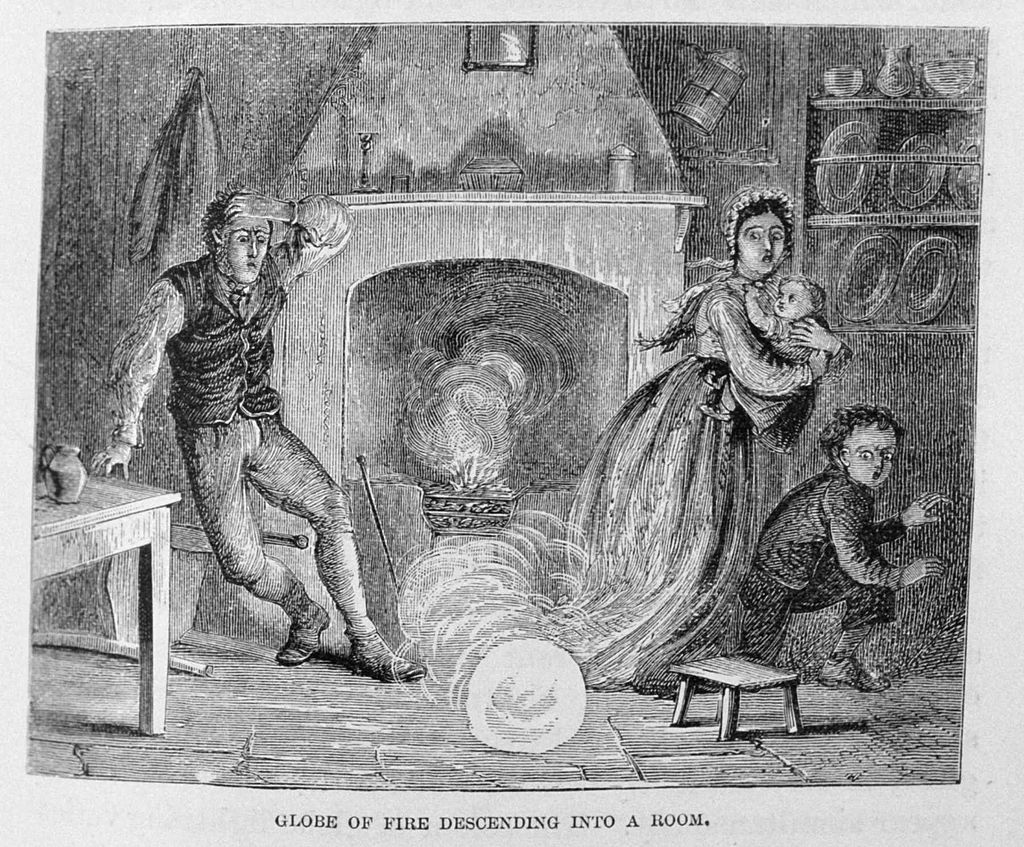
Ball lightning coming through the chimney, from an 1886 newspaper report. Photo: Wikimedia Commons
Many theories, limited evidence
So, what exactly is ball lightning? Science isn’t quite sure yet. Many reports can likely be attributed to other things. A 2010 study from researchers at Austria’s University of Innsbruck found that the magnetic fields generated by lightning storms could cause visual hallucinations. Specifically, they can cause “magnetophosphenes,” which appear as flashing lights. This could account for cases of ball lightning.
But unless magnetophosphenes are contagious and spread over video, what the Pardy’s saw was real.
Researchers have put forward dozens of theories to explain ball lightning. One of the more credible theories came from a group of Chinese researchers who happened to record ball lightning in 2014. In only a few seconds, the ball went from purple, to orange, to white, to red and then sputtered out. The changing colors indicated its makeup, and the scientists detected small amounts of silicon, iron, and calcium.
They proposed that ball lightning forms when a lightning bolt hits soil, vaporizing the elements within, and creating light and color effects. Experiments in 2007 using vaporized silicon support this theory. Scientists from the Federal University of Pernambuco were able to produce small glowing orbs by delivering electric shocks to silicon wafers.
Another theory is that ball lightning is detached Saint Elmo’s fire (a faint light on the extremities of pointed objects during stormy weather, such as around the masts of ships). There’s also the “Electrochemical Model,” positing that ball lightning is air plasma held in a ball by layers of chemical ions.
Science has yet to settle which, if any, of these theories is correct. But the video filmed by the Pardy’s is probably the best video of ball lightning captured so far, and lightning phenomena researchers will likely pore over the 23 seconds of footage for new information.
